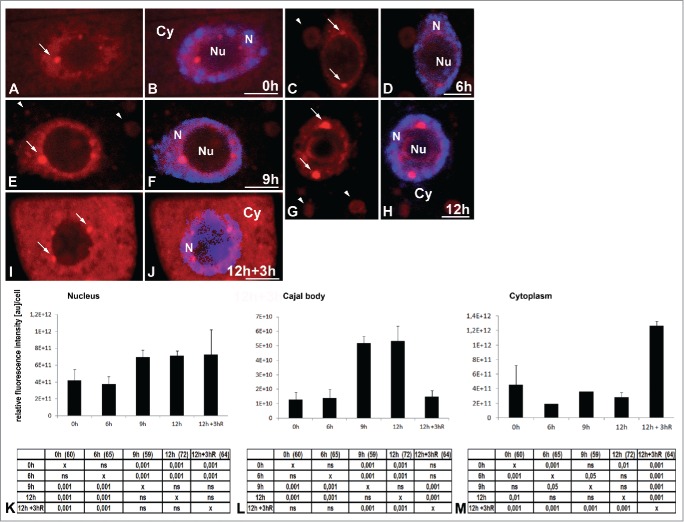Figure 1.
Localization of poly(A) RNA using Cy3(dT) 30 probe in Lupinus luteus meristematic root cells before stress (0 h) (A,B) and after 6 h (C, D), 9 h (E, F), and 12 h (G, H) hypoxia. Poly(A) RNA accumulates in the nucleus during successive hours of hypoxia. In the nuclei, the signal appears in the nuclear bodies (arrows). Poly(A) RNA signal in the cytoplasm decreases, and stress granules like structures form (arrowheads). After 3 h of re-aeration (I, J), the signal reappears in the cytoplasm, and stress granules are not observed. Merging with DAPI staining (B, D, F, H, J). Bar, 10 µm. N- nucleus, Nu- nucleolus, Cy- cytoplasm. Quantitative analysis of poly(A) RNA in the nucleus (K), Cajal body (L), cytoplasm (M) under normoxia, hypoxia and re-aeration conditions. The tables under each plot present the significant differences between groups, with testing probability below the value shown in the table (P<), α = 0.05. In the column heading, the number of analyzed cells in each stage is presented in brackets. ns - nonsignificant differences between groups.

